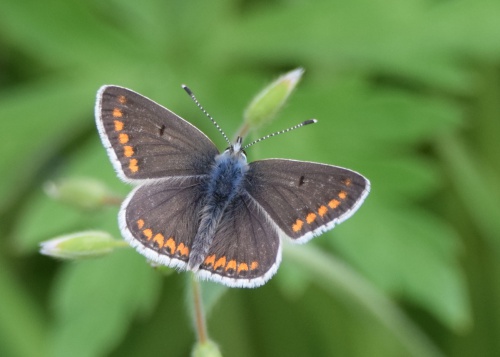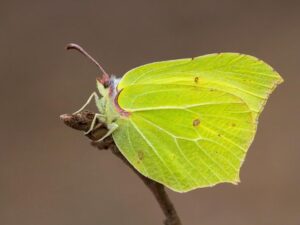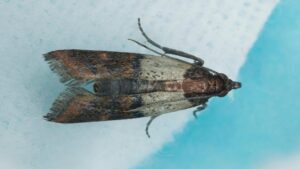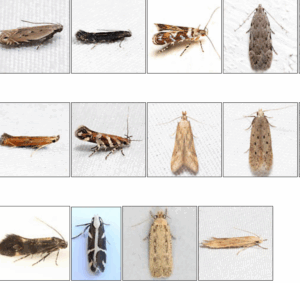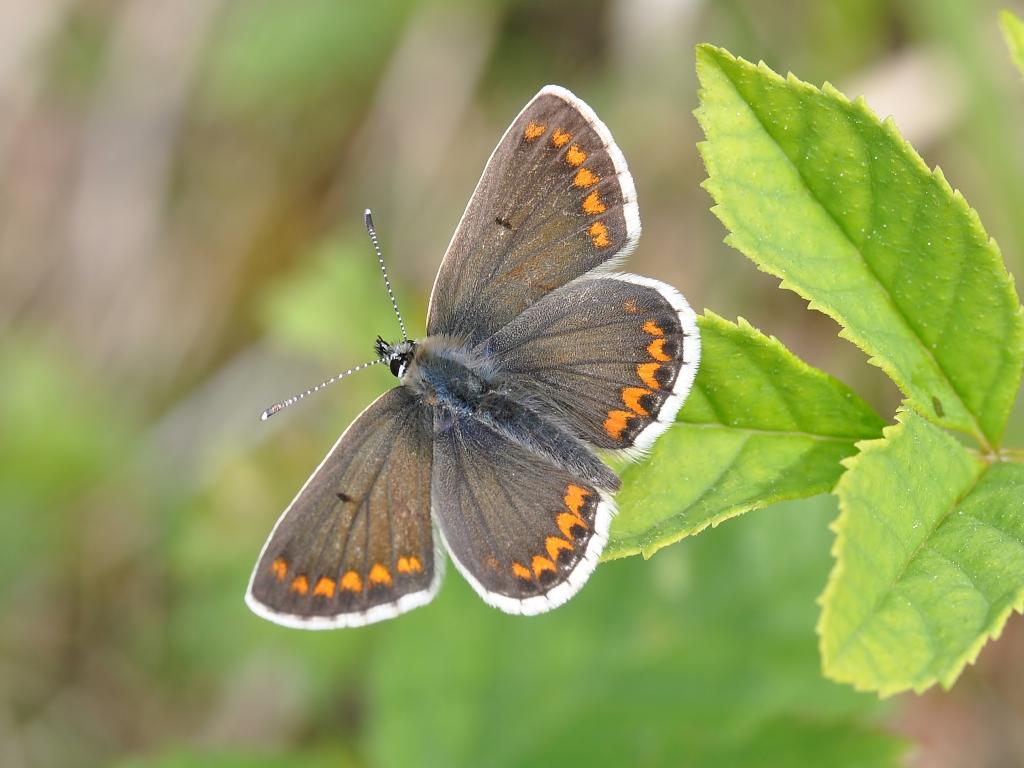
This small butterfly is characteristic of southern chalk and limestone grassland but occurs in a variety of other open habitats as far north as north Wales and Yorkshire. It is a close relative of the Northern Brown Argus, which is restricted to Scotland and northern England.
The adults have a silvery appearance as they fly low to the ground and they stop frequently either to perch or feed on flowers. They may be confused with Common Blue females, which also have brown upperwings but usually with some blue at the base. It is also very similar to Northern Brown Argus which usually has no orange spots on forewing.
The butterfly spread rapidly in the mid-1990s but lost ground in the last three years of the twentieth century.
Size and Family
- Family: Blues
- Size: Small
- Wing Span Range (male to female): 29mm
Conservation status
- Butterfly Conservation priority: Low
- European status: Not threatened
Caterpillar Foodplants
Common Rock-rose (Helianthemum nummularium) is used almost exclusively on calcareous grasslands. In other habitats it uses annual foodplants, mainly Dove’s-foot Crane’s-bill (Geranium molle) and Common Stork’-bill (Erodium cicutarium). There are also recent reports of egg-laying on Cut-leaved Crane’s-bill (G. dissectum), Meadow Crane’s-bill (G. pratense), and Hedgerow Crane’s-bill (G. pyrenaicum).
Unlike most other “blues”, the Brown Argus has no blue scales on its upperside, both sexes being primarily brown in colour as its common name suggests, although the butterfly does exhibit a blue sheen when at certain angles to the light. Both sexes have beautiful orange spots on the upperside of both forewings and hindwings. This widespread species can be found south of a line between Dorset in the west and South-east Yorkshire in the east, along with colonies in Derbyshire, North Devon, East Cornwall and West Cornwall. It is also found in north and south Wales, but is absent from central Wales. This species is also absent from Scotland, Ireland and the Isle of Man. This species occurs in small, compact colonies, and is not a great wanderer, only travelling a couple of hundred metres, at most, from where it emerged.
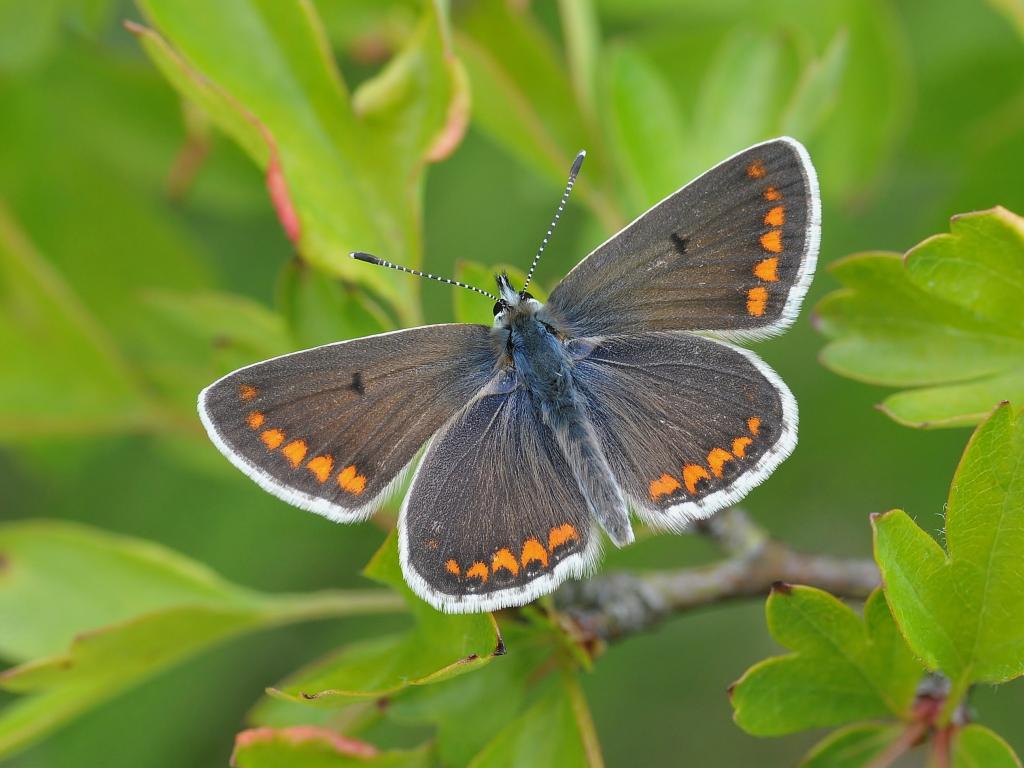
Lifecycle
This species generally has 2 broods a year in central and southern England, with only a partial second brood in north Wales and the north of England. In good years, a partial 3rd generation may appear in the south. The adults emerge first in central and southern England in early May, peaking at the end of May and beginning of June, and giving rise to a second brood that emerges at the end of July and into August. In north Wales and northern England, the first emergence starts in early June with any second brood appearing in early August.

Habitat
The main habitats are chalk and limestone grassland. However, the butterfly can occur in a range of habitats with disturbed soils including coastal grassland and dunes, woodland clearings, heathland, disused railway lines and road verges.
Colonies are typically found on chalk or limestone downland where the foodplant is abundant. However, this species can also be found on heathland and in open woodland.
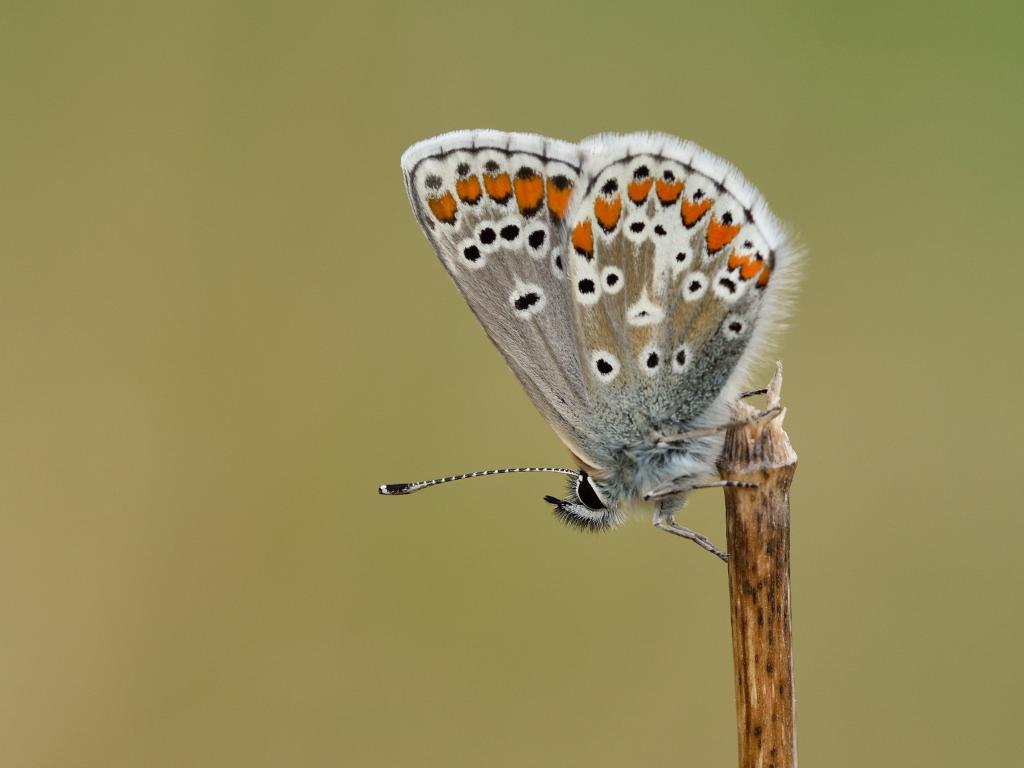
The Brown argus favours open, chalk and limestone grasslands, but can also be spotted on coastal dunes, in woodland clearings and along disused railways.
The Brown argus is a small butterfly that is on the wing throughout the summer, between May and September. Adults feed on Common Rock-rose, which is also the caterpillars’ foodplant, together with various species like Crane’s-bills. The Brown argus is found in dry, sunny and open habitats, including heathland and downland, and seems to be expanding its range as the climate warms up.
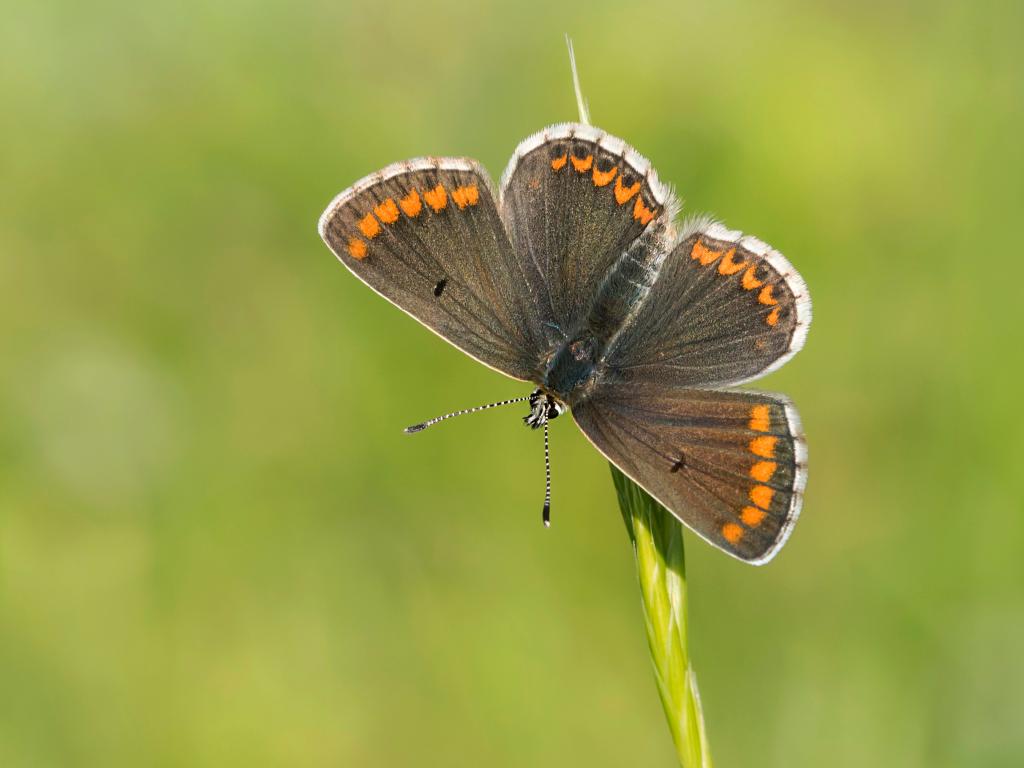
How to identify
The Brown argus has bronzy-brown upperwings with an orange band of spots across the edge of each wing. It is very similar to the female Common Blue, but tends to be smaller, with no hint of blue in the wings.
Did you know?
A very close relative, the Northern Brown argus, is found in northern England and Scotland and is a Priority species under the UK Post-2010 Biodiversity Framework. The Northern Brown Argus does not usually have very prominent orange spots on the forewing.
Where to see
- Habitat: Previously only on warm south-facing chalk, its habitat now includes grassland on clay, woodland clearings, verges and heaths.
- Caterpillar foodplants: Rock Rose, Common Storksbill, Dove’s-foot Cranesbill, Cut-leaved Cranesbills
- Best places: Fontmell Down, Hod Hill, Ballard Down, Durlston CP East, Durlston CP West, Townsend Quarry, Cerne Abbas, Avon Heath CP North, Avon CP South, Badbury Rings, Stour Valley.
- orthern brown argus butterflies occur in small colonies of less than fifty individuals and the females have only one brood a year. Northern brown argus’ are dark brown in colour with several orange crescents towards the edges of the wings. These crescents are small or absent on the forewings, which have a white spot in the centre of the upperside and have pale undersides.
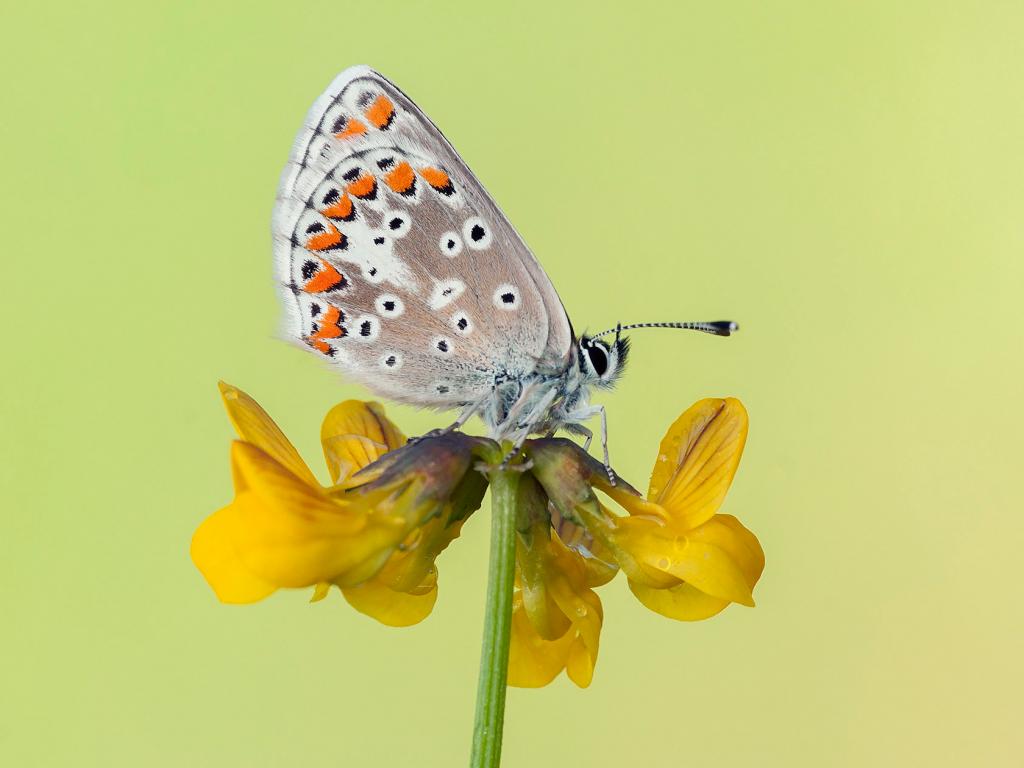
Behaviour
- The Northern brown argus’ preferred habitat is often where common rock-rose, the larval food source of choice, is found growing. This encourages the Northern brown argus to select alkaline ground, such as limestone, as habitat and can be found on south facing slopes and in hollows. Individuals roost communally and enjoy flying in warm sunshine.
- Size
- Wingspan: 2-2.5cm
- Status
- Listed as Vulnerable on the 2010 IUCN Red List and is a UKBAP priority species.
- Distribution
- Found across Scotland.
- When to see
- June – August
- Facts
- For many years, this butterfly was thought to be a subspecies of brown argus. It is has since been discovered to be a separate species and has been shown to have a different flight time and different number of broods.

